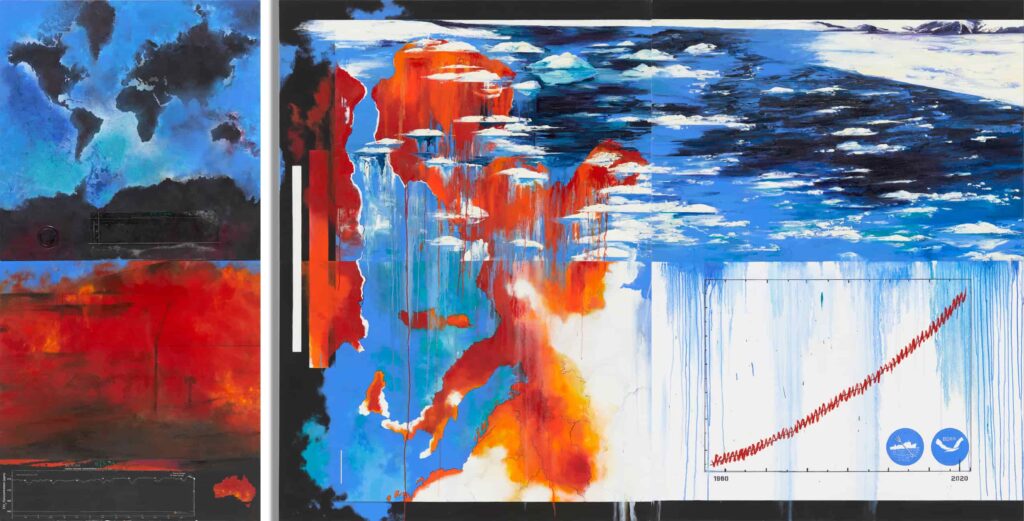Environmental art is a very broad concept, rather than a specific movement.
The physical and natural environment has always had its place in the field of art, beginning with Paleolithic rock paintings, which often depicted animals or plants. As art and its forms have evolved over the centuries, expressions of the natural environment have been seen in forms such as landscape paintings.
As society has become more aware of its physical environment and the environmental challenges it faces, nature-inspired art has had to adapt.
Contemporary representatives of environmental art such as Diane Burko and Alexis Rockman have incorporated these issues into their work to draw attention and spark discussion about how humans and ever-increasing industrialization are negatively impacting the physical environment. Burko’s work is especially noted for its depiction of natural phenomena and how they change over time.
There is no definition of environmental art but the movement covers a diverse set of social, political, and scientific topics and messages and can be divided into several movements.
The main goal of representatives of eco-art is to express the relationship between people and the environment by connecting the natural environment with their work. This is often expressed in issues of ecology, environmental health, and related human rights issues, making environmental art an excellent vehicle for representing nature conservation and environmentally friendly politics. These artists use natural materials from the environment in their work, such as branches, flowers, leaves, sand, soil, and stone.
Among the iconic environmentalist artists are:
- Diane Burko;
- Olafur Eliasson;
- Vik Muniz;
- Janel Houton.
Diane Burko is a contemporary Environmental painter and artist. She is best known for her paintings and powerful photography which represent the global concerns regarding the deteriorating environment. The artist hopes that her work, which continues to this day, will allow viewers to reflect on how they contribute to the deteriorating environment and man-made climate destruction. She serves as a reminder of the massive glacier melting phenomenon that is taking place worldwide through her Environmental art.

Olafur Eliasson is a well-known Environmental painter and creator, best known for his sculptures and grand-scale installations, inspired by the natural phenomena of the environment. The artist has worked on several public art projects. He installed The Weather Project (2003) in the Turbine Hall of the Tate Modern in London, which has been called a milestone in contemporary art.
Vik Muniz`s work was known for its reuse of waste and recycled materials, including paper, magnets, toys, and even cigarette butts. His most famous works are “Postcards from Nowhere: West Palm Beach” (2014), “Mnemonic Vehicle No. 1” (2014), and “Repro (Monochromes): Green” (2017).
Janel Houton`s work expresses themes of national and global ecological issues, such as the protection of the earth’s deteriorating environment, and climate change. One of her most well-known works is Arctic Vision of St Francis (2017), which expresses the issue of global warming and its effects on the arctic regions and its indigenous fauna.

























